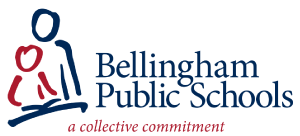Research and Assessment coordinates student academic assessment and evaluation efforts in the district. We support the administration of district and state assessments and assist in the use of this data in the educational decision-making process.
To view a list of district-wide assessments and when they are given, please click on Assessment Schedule for Families 2023-24.
Classroom Assessments
Teachers use ongoing classroom-based assessments to personalize instruction, monitor student progress and measure achievement. Teachers utilize discussions, observations, presentations, performances, quizzes, tests and many other tools to assess students’ understandings. These strategies and tools are closely linked to our curriculum, yielding timely and detailed information about students’ learning.
District Interim and Program Assessments
Across our district, we use common assessments to provide information about student growth, achievement, and our instructional programs. Some of these assessments are also used to identify students who may benefit from additional interventions or enrichment. In high school, we offer additional assessments to help students gauge their readiness for post-secondary goals outlined in their High School and Beyond Plan.
State Assessments
∑¨«—”∞ ” Public Schools gives annual state assessments to students in grades 3 ‚Äì 8 and high school. English language arts (ELA) and math are measured with Smarter Balanced tests. Science is measured with the Washington Comprehensive Assessment of Science (WCAS) in grades 5, 8 and 11. For a small number of students, the Washington Access to Instruction and Measurement (WA-AIM) is administered as an alternate assessment, per the student‚Äôs IEP.
Multilingual learners who qualify for additional English language proficiency support also participate in an annual assessment. In Washington, we give the WIDA English language proficiency assessment to all qualified students in grades K-12. This measures their progress with English language proficiency and determines which students will remain eligible for continued language services.
¬Ýthe district‚Äôs strategic plan, guides everything we do for our students, families, community and staff. One of our core beliefs is to focus on the¬Ýwhole child. State tests are only one benchmark; other measures and evidence are just as important in assessing the development of our kids. We encourage you to keep these tests in perspective of our overall goals.
The state tests assess our learning standards in English language arts, mathematics, and science, which strive for college and career readiness by high school graduation. Please keep in mind that your child’s teachers are the best resource for a complete picture of your child’s academic proficiency.
Preliminary data from the Smarter Balanced English language arts and mathematics tests are available to schools electronically within three to four weeks after a student completes testing. ELA, math and science score reports for families are loaded into Skyward Family Access for viewing or printing in the fall.
Don‚Äôt forget a good night‚Äôs sleep and healthy breakfast are an essential part of every school day.¬ÝYour child(ren)‚Äôs school(s) send information about testing dates.
- For please visit the state’s website.
- Try out an online
- Visit the website to see sample score reports, view sample test items and find other parent resources.
- For
- For i
FAQ: Why are we taking a state test?
Classrooms and learner expectations can be different across the hall, the school, the district and the state. In the mid-1990s, Washington state decided that families have the right to know how students are progressing toward a common set of learning standards that help fulfill the basic rights of every student. So common assessments – our state tests – were written for teachers to use once a year, in addition to the various assessments and strategies that teachers use throughout the year in their classrooms.
Different kinds of assessments are used to tell us what to teach tomorrow, what progress students are making this month, when they have mastered key concepts, or when they’re ready for new information and thinking. The state tests tell us about progress from one year to the next in English language arts and in math. We also have state science tests that we use in fifth, eighth and eleventh grades. Over time, these will help fill in the picture about a student’s readiness for what comes after high school, which we call college and career readiness. A lot goes into preparing for adult life, and these academic measures are just one part of that preparation.
The state tests are not used to fill out report cards. Students do not need to pass the tests to move on to the next grade level. The state tests do, however, give teachers extra information about academic progress to help assure students are on the path to success. The state tests also help teachers, schools and districts know if our programs are effective or if changes are needed. When we all agree that one of our assessments each year is a common state test, it’s easier for us to measure student growth and ensure that our school programs are working well.
